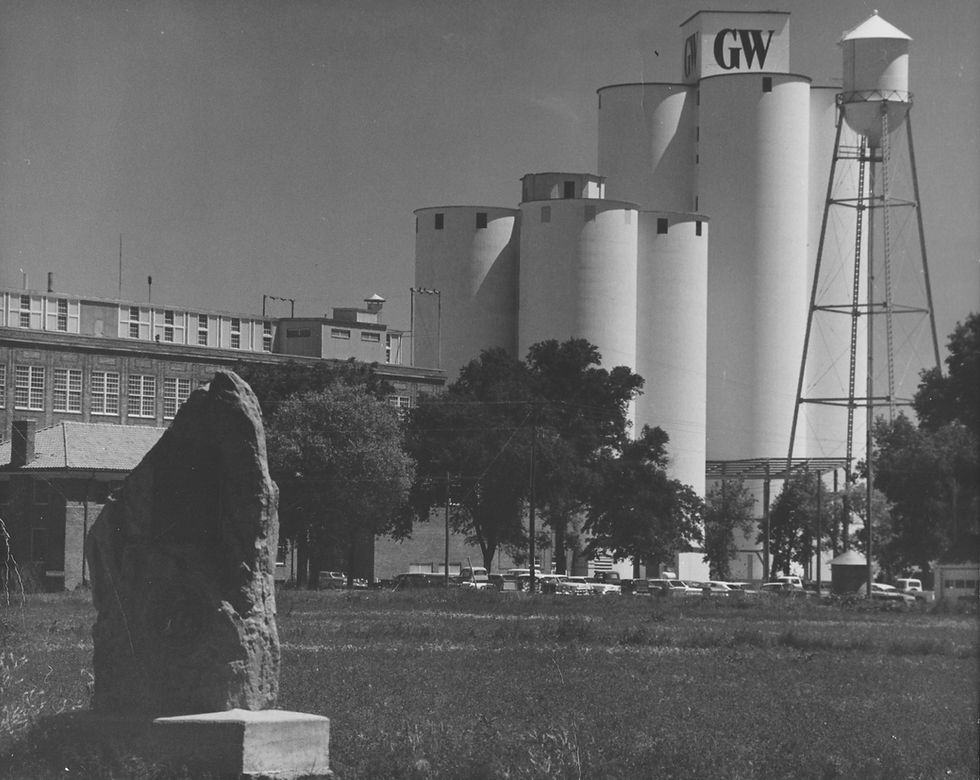A Spoonful of Sugar.....
- Cindy Kipp

- Dec 19, 2020
- 3 min read
Updated: Mar 22, 2021
"There's millions in it," read a local newspaper in Sterling Colorado in 1901, as the dreams of what raising sugar beets in the valley of northeast Colorado would bring to this prospering booming community.

Sweet dreams............turned into Sugar Dreams. Some prime acres around the area had already laid the ground work for planting and raising sugar beets even before the bold dream of a sugar beet factory in Sterling Colorado. Much of the first beet harvest in the early 1901-02 season went to factories already in existence in Eaton, Colorado and other front range communities. Plants in those areas were reaping huge rewards and Sterling wanted a share of the coveted prosperity. On a cold December night, 1901, four hundred citizens and farmers packed the Opera House in Sterling, as presiding Chamber of Commerce President set in motion to build a huge sugar beet factory, later named The Great Western Sugar Beet Factory.
But it wasn't until 1904 that ground was purchased on the south edge of town, some two hundred acres. By March 1905, construction began by a firm from Denver Co. Much of the interests, (money) for the factory and the work came from Charles Boettcher, a wealthy German immigrant that financed many if not all of 13 factories from 1899 to 1920. (The Boettcher Foundation in Denver Colorado has a beautiful photo display of the factories.)
Sugar Strike! Rapid progress was being made on the structure, until........the entire work force (100 men) went on strike, May 19, 1905. Apparently, they had no idea what they were working for, and when they found out it was $1.75 for a 10 -hour, hard working day, they soon decided they were worth a-lot more! With some firm negotiations, they returned to work, finished the massive undertaking, and by November of 1905, they were receiving and processing 9,000 acres of sugar beets into the factory.
All is Good! By 1909, the factory was booming. The work force expanded to 275 people, as beets were coming in from the Morgan and Sedgwick counties as well. Farmers were awarded five dollars per ton for the crop. And by 1930, area farmers grew a record 16,859 acres for 225,000 tons!

Check it out! All about sugar! https://www.sugar.org/sugar/farm-to-table/?gclid=Cj0KCQiA-rj9BRCAARIsANB_4AA15VXmMtL1YP_T1uLFSIzJqpoh2tky8lSWyLr3FheLBz1QZL41XikaAlBAEALw_wcB

The following article is by Susan Davis from Inman Kansas, a farm girl native of northeast Colorado area, with first hand experience in the sugar experience. This excellent article was published in the Fence Post, a Colorado publication in December of 2007.









For many of those expanding years the company held yearly banquets honoring the beet farmers within the districts that were raising and producing excellent sugar beets. Some of the farmers were present every year holding the shinny, Sterling silver sugar bowl, and for others, maybe one time, non-the-less it was still...... sugar sweet.

Along with the individual awards came many factory award winning years. Through the 1960's and 70's the Sterling Great Western operations won the Pennant seven of a 12 years, from 1962 to 1974. This coveted award was based on tons of beet sliced per day, along with production of sugar and labor used to produce that product.


The successful story of the Sugar Beet factory and raising the productive crop in northeast Colorado can not be completed without the vital contribution of immigrant setters. Coming to this area in record numbers from the late 1890's to the early 1900's were: Germans from Russians, Bohemians, Italians, Japanese and Mexicans. They were strange unknown people to these Colorado parts...... but they were willing to work. They came from counties where the backbreaking jobs were endless and grueling, crossing miles of seas for new opportunities, in search of something better. Many started as beet labor for established farms, later, owning their own successful homesteads. Some went right to work at the sugar beet factory upon arrival.

The highly successful Great Western Sugar Beet Factory operated for more than 80 years when it finally closed its doors in 1985. Today, sugar beet farming is still strong in northeast Colorado, but only one factory remains, representing this area in Ft. Morgan Co. Currently another business owns the property in Sterling; some of the waning structure, still visible, is a sweet reminder of the rich vital heritage this historical business still has on the community today.
Credit: Overland Trail Museum, Fort Sedgwick Historical Society, Julesburg Co., The Logan County Ledger, Susan Davis, (who wrote the article in the Fence Post magazine),Lori Gill Collection, Cindy Kipp.
If anyone has additional photos of the Sterling and Ovid Co. factories, let me know and I will include them.




Comments